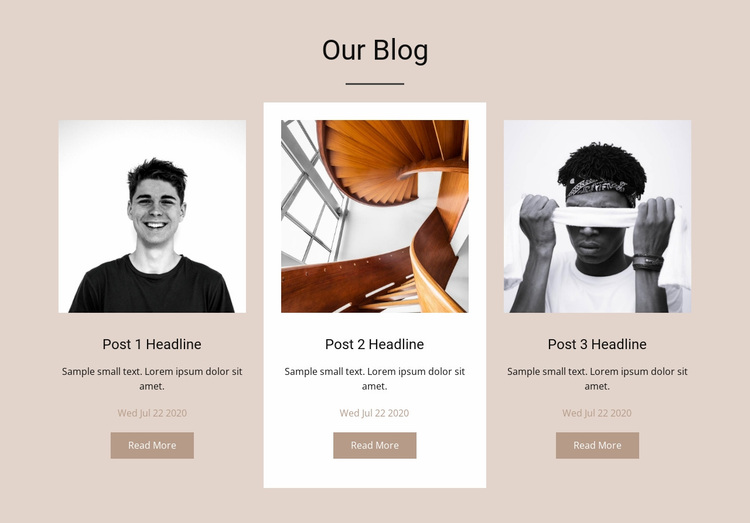Low-Cost and Professional Website Design for Small Business Owners
Low-Cost and Professional Website Design for Small Business Owners
Blog Article
Top Tips for Creating an Impactful Site Style That Transforms
In today's digital landscape, the significance of an impactful site style can not be overemphasized, specifically when it pertains to transforming site visitors right into clients. To achieve this, one need to take into consideration a selection of aspects, consisting of understanding the target audience, focusing on user experience, and enhancing for mobile platforms. The strategic usage of compelling call-to-actions and a distinct visual pecking order plays an important role in guiding customers via their trip. As we discover these essential components, it comes to be apparent that the success of your internet site pivots on greater than just visual appeal; it calls for a thoughtful technique to style and functionality.

Understand Your Target Target Market
Comprehending your target audience is essential to reliable web site design, as it lays the groundwork for creating an interesting customer experience. Determining who your customers are, including their demographics, preferences, and actions, allows developers to tailor the website's content, design, and functionality to meet particular needs.
Carrying out detailed market research study is essential in this process. Studies, interviews, and analytics can offer useful insights right into user assumptions and discomfort points. By compiling this information, developers can develop individual personas that stand for various sectors of the audience, making sure that design decisions are informed and appropriate.
Furthermore, understanding the target audience helps in picking appropriate style components such as color pattern, typography, and images that reverberate with customers. An internet site that talks straight to its audience fosters a feeling of connection and count on, urging longer check outs and higher conversion rates.
Eventually, a user-centered strategy to website layout not just improves customer satisfaction however also supports business goals by driving interaction and commitment. By focusing on the requirements and choices of the target market, an internet site can efficiently offer its purpose and attain desired end results.
Prioritize Individual Experience
To improve the general performance of an internet site, prioritizing user experience (UX) is crucial (Website Design). A properly designed UX makes sure that visitors can navigate the website easily, find details promptly, and involve with content meaningfully. This leads to boosted user satisfaction and greater conversion prices
Begin by implementing user-friendly navigation. Menus should be logically structured, allowing individuals to locate key locations of the site with marginal effort. Consistency in design components, such as color schemes and fonts, cultivates knowledge, which is important for keeping customer interaction.
Furthermore, consider the loading speed of your website. A delay of simply a few secs can cause considerable drop-offs, as customers are less likely to wait on a slow-loading web page. Streamlining images and maximizing code can improve efficiency and retain site visitors.
In addition, clarity in material discussion is crucial. Usage succinct, engaging language and damage up text with visuals to improve readability. By prioritizing customer experience, you not just create a more delightful environment for site visitors however likewise reinforce your brand name's trustworthiness. Eventually, a focus on UX click resources is an investment in the long-lasting success of your internet site.
Enhance for Mobile Instruments
Maximizing for mobile phones is vital in today's digital landscape, where a boosting variety of users accessibility web sites via smart devices and tablet computers. A mobile-friendly layout not just improves individual experience however also plays a substantial function in enhancing internet search engine positions. To attain this, it is vital to embrace a receptive style that instantly gets used to different display sizes and alignments.

Filling rate is an additional essential element; mobile customers are typically much less individual and anticipate fast access to details. By focusing on mobile optimization, you make sure that your website stays competitive and efficiently engages a wider target market.
Usage Engaging Call-to-Actions
A web site's efficiency commonly hinges on its ability to direct visitors toward preferred actions, making compelling call-to-actions (CTAs) crucial elements of layout. CTAs work as the pivotal points that direct customers to involve with the website, whether that suggests making a purchase, enrolling in a newsletter, or downloading a source.
To produce effective CTAs, clarity is paramount. Usage succinct language that plainly connects the activity you desire the customer to take. Phrases such as "Obtain Started," "Register Free," or "Shop Now" not only convey necessity but also eliminate ambiguity. The placement of click over here CTAs is equally important; they should be strategically positioned throughout the page to ensure they are easily noticeable, specifically in high-traffic locations.
Additionally, consider utilizing directional hints, such as arrowheads or photos, to direct customers towards these buttons. By concentrating on these elements, companies can significantly enhance user involvement, driving conversions and eventually attaining their site's objectives.
Focus on Visual Hierarchy
Efficient website style counts heavily on a well-structured aesthetic hierarchy that overviews customers through material seamlessly. By organizing components in a way that prioritizes details, designers can improve individual experience and promote decision-making. This involves using dimension, color, comparison, and spacing tactically to attract attention to the most important elements of a website.
Making use of larger font styles for headings and subheadings establishes a clear difference between various areas, permitting individuals to scan material view website easily. Additionally, employing contrasting colors for buttons and calls-to-action can catch individual focus and urge communication. Whitespace is an additional important element; it protects against clutter and allows users to concentrate on essential messages without interruptions.
Photos and graphics need to enhance the text while additionally sticking to the well-known pecking order, strengthening the total message (Website Design). Consistency in style aspects, such as color design and typography, additional strengthens the visual hierarchy, making navigation intuitive

Verdict
In verdict, efficient website style demands an extensive understanding of the target audience, prioritization of customer experience, and mobile optimization. Eventually, a well-executed website layout serves as an important component in driving customer actions and attaining company purposes.
Report this page